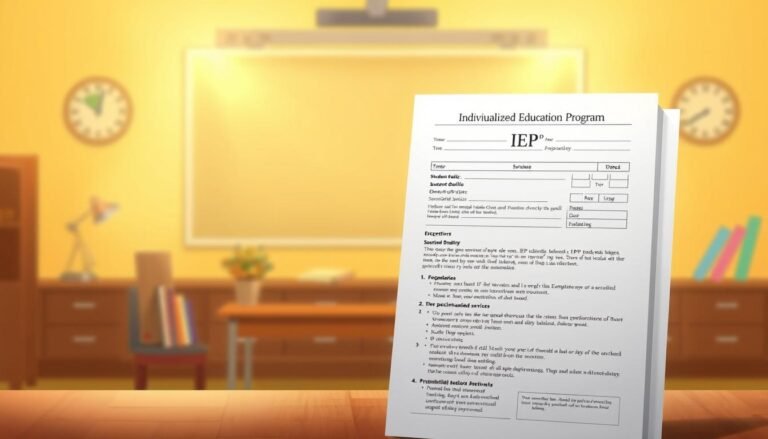
Feeling drained and demotivated at work? You’re not alone. Workplace stress can harm your mental health. It’s key to know if you’re facing burnout or depression to get the right help.
It’s tough to tell burnout from depression. But knowing the difference is vital for your mental health at work. This article will help you with quick self-screens. It will also tell you when to look for professional help.
Key Takeaways
- Understand the differences and similarities between burnout and depression.
- Learn how to use quick self-screens to assess your mental health.
- Discover when it’s time to seek professional help for workplace stress.
- Explore strategies for maintaining good mental health at work.
- Find out how to support colleagues who may be struggling with burnout or depression.
Understanding the Silent Epidemic of Workplace Stress
Workplace stress is a big problem that affects both employees and companies. It impacts mental health and overall well-being.

The modern workplace is changing fast. Stress and its effects on mental health are becoming more clear. It’s key to understand these mental health challenges at work.
The Rising Prevalence of Mental Health Challenges in the Workplace
Mental health issues like burnout and depression are getting worse. Job burnout makes people feel exhausted physically or emotionally. This can harm not just the person but also the company.
| Mental Health Challenge | Prevalence | Impact |
|---|---|---|
| Burnout | Increasing | Physical and emotional exhaustion |
| Depression | High | Mood, cognitive, and physical symptoms |
Why Identifying Your Condition Matters
Knowing if you’re dealing with burnout or depression is key to getting the right help. Understanding your situation helps you find the right support.
Recognizing the signs and acting early can greatly improve your mental health. It’s not just about treating symptoms. It’s about finding and solving the root problems.
What Is Burnout? Defining the Exhaustion Syndrome
Burnout is more than just feeling tired. It’s a syndrome with emotional exhaustion, cynicism, and reduced professional ability. It affects many professions, causing big personal and work problems.
The Three Dimensions of Burnout
Burnout has three main parts:
- Emotional Exhaustion: Feeling drained and exhausted from too much stress.
- Cynicism and Detachment: Becoming negative or distant towards work.
- Reduced Professional Efficacy: Feeling less competent and less successful at work.

Common Triggers and Risk Factors
Many things can lead to burnout, including:
- Too much work and not enough control
- Poor balance between work and personal life
- Not enough support from others
High-Risk Professions and Work Environments
Some jobs are more likely to cause burnout because they are very demanding:
| Profession | Burnout Risk Factors |
|---|---|
| Healthcare Professionals | Long hours, high-stakes decisions, emotional strain |
| Social Workers | High emotional demands, limited resources, bureaucratic hurdles |
| First Responders | Exposure to trauma, long shifts, stressful environments |
Knowing these risk factors helps in coping with burnout and stopping it before it starts.
Depression Explained: More Than Just Feeling Sad
Depression is more than just feeling sad. It’s a serious mental health issue with many causes and signs. Feeling sad sometimes is normal, but depression is deeper and lasts longer, affecting millions globally.

Clinical Depression vs. Temporary Sadness
It’s key to know the difference between clinical depression and feeling sad for a short time. Feeling sad for a while is a normal reaction to something upsetting. But, clinical depression is a long-lasting mental health issue that makes you feel hopeless and lose interest in things you used to enjoy.
Clinical depression is serious and needs professional help. If your symptoms last more than two weeks, it’s time to get help.
Biological and Environmental Factors
Depression comes from a mix of biological, psychological, and environmental factors. Biological factors include your genes and brain chemistry. Environmental factors include stress, trauma, and big life changes. Knowing these can help in finding the right treatment.
How Depression Affects Brain Chemistry
Depression changes the levels of important chemicals in your brain. These chemicals, like serotonin and dopamine, help control your mood and motivation. This change can cause symptoms like feeling down and losing interest in things. Stress can lead to depression, but they are different conditions with different effects on your mind.
Taking a depression self-test is a good first step to understand your mental health. Knowing the symptoms of burnout and depression is important. Burnout can sometimes lead to depression. This section mainly talks about depression, but knowing about both can help you understand your mental health better.
Burnout vs Depression: Key Differences and Similarities
Burnout and depression are different but connected. They both affect a person’s life quality. Knowing how they differ helps in treating them better.
Origin and Development Patterns
Burnout comes from long-term job stress. It leads to emotional exhaustion, cynicism, and feeling less effective at work. Depression, on the other hand, is a mood disorder caused by many factors.
Symptom Overlap and Distinctive Features
Burnout and depression share symptoms like feeling tired and unmotivated. But depression is marked by long-lasting sadness, hopelessness, and losing interest in things you used to like. Burnout is more about job stress and feeling disconnected from work.
| Characteristics | Burnout | Depression |
|---|---|---|
| Primary Cause | Occupational Stress | Biological, Environmental, Psychological Factors |
| Key Symptoms | Emotional Exhaustion, Cynicism, Reduced Professional Efficacy | Depressed Mood, Loss of Interest, Changes in Appetite or Sleep |
| Context | Work-related | Pervasive, Not Limited to Work |
How One Can Lead to the Other
Burnout can lead to depression because of the ongoing stress and emotional drain. Depression can also make burnout worse if someone can’t handle their feelings at work.

It’s key to understand how burnout and depression interact. Knowing their differences and similarities helps in finding the right support and treatment for mental health.
The Burnout Self-Screen: 5-Minute Assessment
Recognizing burnout signs is the first step to recovery. Burnout can affect anyone, but it’s more common in stressful jobs. This 5-minute self-screen helps spot burnout symptoms.
Step 1: Evaluating Physical and Emotional Exhaustion
Physical and emotional exhaustion are key signs of burnout. Ask yourself:
- Do you feel drained or depleted at the end of the day?
- Are you experiencing chronic fatigue or insomnia?
- Have you noticed a decrease in your motivation or energy levels?
If you answer “yes” to these, you might be feeling exhausted.
Step 2: Measuring Cynicism and Detachment
Cynicism and detachment are also signs of burnout. Think about:
- Have you become increasingly cynical or detached from your work or colleagues?
- Do you feel like you’re just going through the motions without any sense of purpose?
- Have you noticed a decrease in your empathy or ability to connect with others?
Feeling this way could mean you’re experiencing burnout.
Step 3: Assessing Professional Efficacy
Professional efficacy is about feeling competent and achieving in your work. Ask yourself:
- Do you feel like you’re not performing as well as you used to?
- Are you experiencing reduced productivity or performance?
- Have you noticed a decrease in your confidence or sense of accomplishment?
Scoring Your Burnout Assessment
To score, count the “yes” answers. If you have several, you might be experiencing burnout. Don’t panic; knowing is the first step to coping with burnout and getting help.
For more on burnout recovery tips and when to see a therapist, keep reading. Knowing your symptoms is key to managing and overcoming burnout.
Depression Self-Test: Recognizing the Warning Signs
Understanding and managing depression starts with a simple self-assessment tool. Depression affects millions worldwide, causing significant distress. A depression self-test can help identify common symptoms.
Step 1: Evaluating Mood and Emotional Changes
The first step is to check for mood and emotional changes. Ask yourself:
- Have you felt persistently sad, empty, or hopeless over the past two weeks?
- Have you lost interest in activities you once enjoyed?
- Do you feel irritable or have mood swings?
These changes are important signs of depression.
Step 2: Identifying Physical Symptoms
Depression also shows in physical symptoms. Look for:
- Changes in appetite or sleep patterns?
- Fatigue or lack of energy?
- Unexplained physical pains or headaches?
These symptoms are key to understanding your mental health.
Step 3: Assessing Cognitive and Behavioral Patterns
The final step is to check for cognitive and behavioral changes. Ask yourself:
- Difficulty concentrating or making decisions?
- Withdrawal from social activities or lack of motivation?
- Changes in daily task performance?
These changes can affect your daily life.
Calculating Your Depression Risk Score
To find your depression risk score, count the symptoms you’ve experienced. The more symptoms, the higher your risk. This test is not a definitive diagnosis but can guide you to seek help.
Knowing your depression risk is the first step to treatment. If you’re worried about your mental health, talk to a healthcare professional. They can help with burnout and depression treatment options.
Interpreting Your Self-Screen Results
After you finish the self-screening tests for burnout and depression, it’s time to understand your results. Knowing your scores helps you see how serious your condition is. It also guides you on what steps to take next.
Understanding What Your Burnout Score Indicates
Your burnout score shows how exhausted you are emotionally, mentally, and physically. A higher score means you’re at a higher risk of burnout. Table 1 explains what different scores might mean.
| Score Range | Burnout Level | Recommended Action |
|---|---|---|
| 0-10 | Low Risk | Maintain healthy habits |
| 11-20 | Moderate Risk | Implement stress management techniques |
| 21+ | High Risk | Seek professional help |
Decoding Depression Screening Outcomes
Your depression screening score shows if you have depressive symptoms and how severe they are. Remember, a high score doesn’t always mean you have depression. It just means you should talk to a professional for a full check-up.
When Multiple Conditions Coexist: Next Steps
If you have both burnout and depression, treating both is important. Coping strategies like mindfulness, exercise, and talking to a therapist can help. It’s important to know when to see a therapist. If your symptoms get worse or don’t go away, it’s time to get help.
Common Misdiagnosis Pitfalls to Avoid
Getting the right diagnosis is key to tell burnout and depression apart. These two conditions need different treatments. If not diagnosed right, it can make things worse.
The Limitations of Self-Assessment Tools
Self-assessment tools are good for a first check. But, they’re not perfect. They can be affected by mood and how well you understand the questions. Remember, burnout is not a medically diagnosed condition.
Medical Conditions That Mimic Burnout or Depression
Some health issues can look like burnout or depression. These include hypothyroidism, chronic fatigue syndrome, and sleep disorders. It’s important to check for these through a full medical check-up.
When to Rule Out Physical Health Issues
If you’re always tired, eating less, or sleeping differently, see a doctor. They can find if a health problem is causing your symptoms.
Knowing the differences between burnout and depression helps get the right help. Burnout is about work stress, while depression is more complex. A depression self-test can help, but a doctor’s diagnosis is needed.
When to Seek Professional Help: Clear Warning Signs
Knowing when to seek help is key to managing burnout and depression. If your symptoms are affecting your daily life, it’s time to act.
Immediate Red Flags That Require Attention
Certain symptoms need immediate action. These include:
- Suicidal thoughts or feelings of hopelessness
- Severe anxiety or panic attacks
- Inability to perform daily tasks or maintain personal care
If you’re experiencing any of these, seek help immediately.
Persistent Symptoms That Shouldn’t Be Ignored
Some symptoms may not be as severe but need professional help if they last. These include:
| Symptom | Duration | Impact |
|---|---|---|
| Chronic fatigue | More than 2 weeks | Affects work and personal life |
| Loss of interest in activities | More than 1 month | Impacts relationships and daily routine |
| Changes in appetite or sleep | More than 2 weeks | Affects overall health and well-being |
Use a functional impact assessment to decide when to seek help.
Using Functional Impact as Your Decision Guide
Assess how your symptoms affect your daily life. Think about:
- How much do your symptoms interfere with work or school?
- How do they affect your relationships?
- How do they impact your overall well-being?
If your symptoms significantly impact these areas, it’s time to look into burnout and depression treatment options. This might include talking to a therapist or counselor.
Finding the Right Mental Health Professional
Getting help from a mental health professional can change your life if you’re dealing with burnout and depression. The right therapist or counselor can offer support and treatments that work. They help you manage these tough conditions.
Types of Providers and Their Specialties
Mental health professionals have different backgrounds and areas of focus. Psychologists have a doctoral degree in psychology. They’re trained to treat mental health issues through therapy and other methods.
Psychiatrists are medical doctors who can diagnose and treat mental health conditions. They often use therapy and medication together. Licensed therapists or counselors have master’s degrees and provide therapy services. Look for someone with experience in treating burnout and depression.
Essential Questions for Your Initial Consultation
Ask important questions during your first meeting to see if the professional is right for you. Some key questions include:
- What experience do you have in treating burnout and depression?
- What therapeutic approaches do you use?
- How will we track my progress?
Navigating Insurance and Affordable Care Options
It’s important to understand your insurance and find affordable care options. Check if the mental health professional is in your insurance network. If not, ask about their fees and payment plans.
Some professionals offer fees based on your income. Also, consider online therapy platforms. They can be cheaper and more convenient.
Workplace Interventions for Burnout Prevention
Stopping burnout at work needs a mix of company plans and personal steps. Companies can lessen stress and make a better work place by using good interventions.
Implementing Organizational Strategies That Work
Companies are key in burnout prevention by making a supportive work place. This can be done by:
- Encouraging flexible work times to cut down workplace fatigue
- Offering help for managing stress and mental health
- Building a culture of open talk and feedback
By using these methods, companies can greatly lower the chance of burnout among workers.
Script Templates for Conversations With Supervisors
Workers should be able to talk about their workload and stress with their bosses. Script templates can help make these talks easier. For instance:
“I’ve been feeling overwhelmed with my current workload. Could we discuss possible adjustments to my tasks or schedule?”
These talks can lead to real solutions, like sharing tasks or flexible hours, to fight managing burnout and depression.
Creating Effective Boundaries in a 24/7 Work Culture
In today’s world where work never stops, setting clear limits is key. Workers can:
- Make clear rules with their team about work hours and being available
- Use tech wisely to set limits on work alerts outside work hours
- Focus on self-care and take regular breaks to lessen workplace stress
By setting these limits, workers can handle their work and life better and lower burnout risk.
Lifestyle Modifications to Combat Both Conditions
Dealing with burnout and depression needs a whole-body approach. Adding self-care, healthy eating, and regular exercise to your day can help a lot. Good sleep habits are also key.
Evidence-Based Self-Care Practice Schedule
Self-care is personal and varies for everyone. A self-care schedule helps keep it consistent. Here’s a daily plan:
- Meditation or mindfulness exercises
- Physical activity like walking or yoga
- Journaling or expressive writing
- Connecting with nature or pets
Nutrition and Exercise Protocols for Mental Health
What you eat and how much you move affect your mind. Eating foods full of omega-3s, vitamins, and minerals helps your brain. Exercise lowers stress and boosts your mood.
| Nutritional Element | Benefit |
|---|---|
| Omega-3 Fatty Acids | Supports brain health |
| Complex Carbohydrates | Stabilizes mood |
| Lean Proteins | Enhances cognitive function |
Sleep Hygiene Checklist and Recovery Techniques
Good sleep is vital for beating burnout and depression. Stick to a sleep schedule, avoid caffeine at night, and have a calming bedtime routine. This can make your sleep better.
“Sleep is the golden chain that ties health and our bodies together.” – Thomas Dekker
By making these lifestyle changes, you can fight burnout and depression. This will help improve your mental health and overall well-being.
Digital Tools and Resources for Ongoing Support
Digital platforms are key for those facing burnout and depression. They offer flexible support for managing mental health.
Top-Rated Apps for Stress Management and Mood Tracking
Many apps are known for helping with stress and tracking moods. Here are some of the best:
- Headspace: Known for its guided meditation sessions.
- Moodfit: Offers personalized mood tracking and insights.
- Calm: Provides relaxation techniques and sleep stories.
Vetted Online Communities and Support Groups
Online communities and support groups offer connection and understanding. Here are some trusted ones:
| Platform | Description |
|---|---|
| 7 Cups | Offers free online therapy and support groups. |
| Psychology Today | Provides a directory of therapists and support groups. |
How to Maximize Benefits from Teletherapy Platforms
Teletherapy platforms can be very helpful. To get the most out of them, follow these tips:
- Establish a regular schedule for sessions.
- Choose a quiet, private space for sessions.
- Be open and honest with your therapist.
Using these digital tools and resources can help manage burnout and depression.
Recovery Timeline: What to Expect
Knowing the recovery timeline is key to managing burnout and depression. Everyone’s journey is different, but there are common steps to follow.
Week-by-Week Progress Markers
In the first weeks, you might feel a mix of emotions. It’s important to track your progress by:
- Seeing less exhaustion and sadness
- Getting better sleep
- Feeling more motivated and energetic
Measuring Improvement Beyond Symptom Reduction
Recovery is more than just feeling better. It’s also about feeling good overall. You can measure this by:
- Enjoying activities again
- Thinking more clearly
- Connecting better with loved ones
Strategies for Handling Setbacks and Relapses
Setbacks are a normal part of recovery. To deal with them:
- Find out what triggers you and learn how to handle it
- Keep up with self-care
- Get help from experts and support groups
By knowing the recovery timeline and watching for progress markers, you can better handle your journey to recovery from burnout and depression.
Building Resilience for Long-Term Mental Health
Building resilience is key for long-term mental health. It helps us deal with burnout and depression. Developing resilience is essential for coping with life’s challenges.
Daily Psychological Skills Practice for Increased Hardiness
Practicing daily psychological skills boosts hardiness. Mindfulness, journaling, and gratitude are effective. For example, a daily mindfulness practice keeps us present and focused.
- Mindfulness meditation
- Gratitude journaling
- Deep breathing exercises
Template for Creating a Personalized Prevention Plan
Creating a prevention plan is about identifying triggers and coping strategies. It also involves setting realistic goals. A prevention plan template can help guide this process.
Incorporating Meaning and Purpose as Protective Factors
Adding meaning and purpose to our lives protects us from burnout and depression. Doing things that match our values boosts our well-being.
By focusing on building resilience, we can handle mental health challenges better. This helps us maintain well-being over the long term.
Conclusion: Your Path Forward
It’s important to know the difference between burnout and depression for good mental health. Recognizing the signs helps you take steps towards getting better and staying well.
Handling burnout and depression needs a full plan. This includes taking care of yourself, changing your lifestyle, and getting help when you need it. Knowing how these issues affect your health helps you make better choices for your well-being.
Spreading awareness about mental health is vital. It helps create a supportive space where people can heal and grow. By talking openly and reducing shame, we can build a healthier community together.
Remember, the journey to manage burnout and depression is long. It takes patience, kindness to yourself, and strength. By focusing on your mental health, you can live a better life.
















